Mars's Orbit
This animation shows the orbital motions of Earth and Mars.
 Click the "Play Fast" button in the lower left corner to make the planets move. They will advance at a simulated rate of one week per second.
Click the "Play Fast" button in the lower left corner to make the planets move. They will advance at a simulated rate of one week per second.
(Note: If you cannot see the animation below, or it is not working properly, you may need to download the latest Flash player.)
The other buttons make the planets move faster or slower, move backwards, or stop. The date in the simulation is shown above the buttons.
In the upper left corner is a simulated view of Mars as seen from Earth through a telescope. This simulated view shows the relative size of Mars at different times; it is not an "actual view" of Mars. For example, it does not show Mars rotating on its axis or changes in the Martian seasons.
Beneath the "telescope view or Mars" is a readout of the distance between Earth and Mars. Astronomers call the closest approach (when Earth "laps" Mars on the "inside lane") between Earth and Mars an "opposition". Notice how the apparent size of Mars varies between successive oppositions. This variation is primarily a result of the ellipticity (non-circularness) of Mars's orbit. The distance between Earth and Mars at opposition can be less than 55 million kilometers, or more than 100 million kilometers, depending on where Mars is along its elliptical orbit when opposition occurs. The oppositon in August 2003 was an especially close one. At that time, Earth and Mars were closer together than they had been in thousands of years!
The red dot is Mars. Earth is blue, and the Sun is yellow. The locations of the planets are shown to scale, but their sizes are not (the planets are actually much, much smaller than the Sun).
You might also be interested in:

On August 27, 2003, Earth and Mars will be closer together than they have been in thousands of years. The centers of the two planets will be 55,758,006 kilometers (34,646,418 miles) apart at 9:51 Universal
...more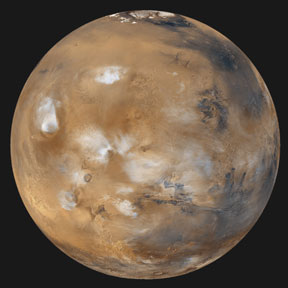
The planet Mars will be much closer to Earth than it normally is at 0319 Universal Time on October 30, 2005. Earth and Mars will pass within 69 million km (43 million miles) of each other, and Mars will
...more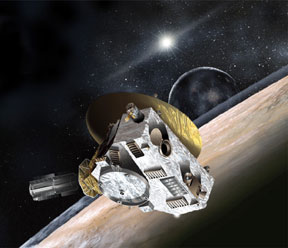
A NASA spacecraft is on its way to Pluto. The spacecraft, named New Horizons, will be the first mission to visit that frozen world on the outer fringes of our Solar System. New Horizons was launched from
...more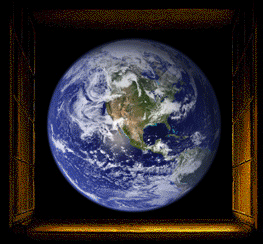
Here you will find links to all sorts of pictures, animations, videos, sounds, and interactive multimedia that are on Windows to the Universe Explore collections of images in the Image Galleries. Watch
...more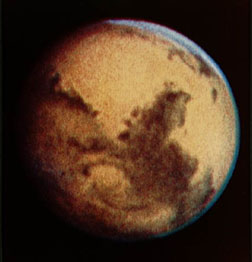
Mars is much like Venus-- it's very bright and therefore easily spotted in the night sky. Because of this, we don't know who exactly discovered Mars. We do know it was named after the Roman god of war,
...more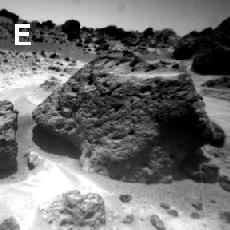
The surface pressure of Mars is about 1/150th that of the surface pressure of the Earth. This means that there are much fewer molecules in the atmosphere. This means that the atmosphere near the surface
...more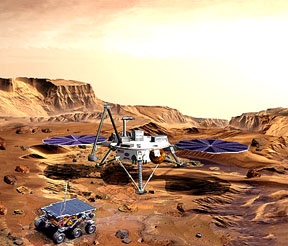
If approved, the Mars 2003 mission will have two important parts. The first is the Mars Surveyor 2003 Lander, which will be launched sometime between May 27, 2003, and June 17, 2003. The lander will use
...more
This image of a potential landing site for the Mars '98 mission was provided by the Mars Global Surveyor mission. The landing site was suppose to be in the south polar region of Mars. In the image, ground
...more
![]() Click the "Play Fast" button in the lower left corner to make the planets move. They will advance at a simulated rate of one week per second.
Click the "Play Fast" button in the lower left corner to make the planets move. They will advance at a simulated rate of one week per second.













